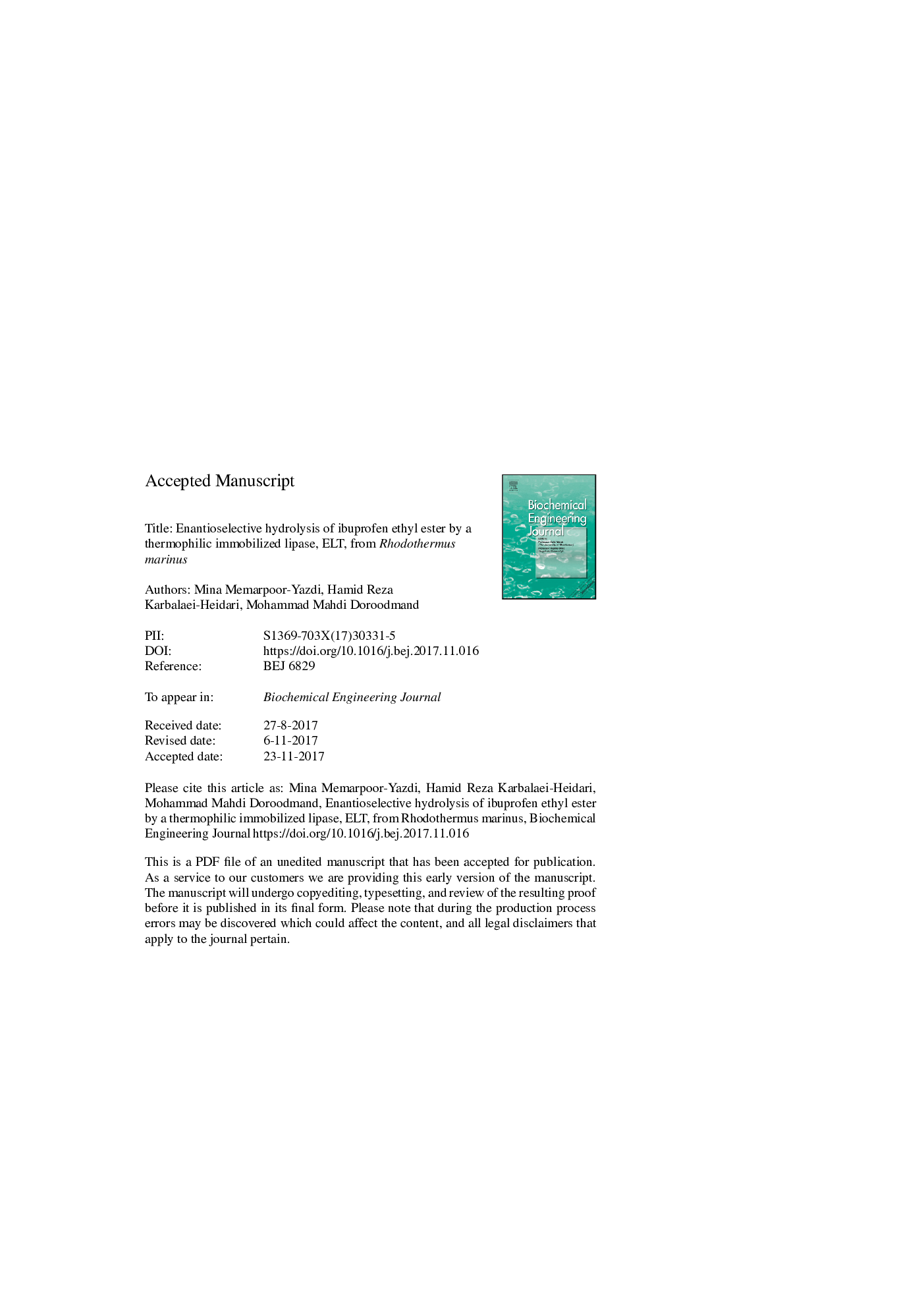| Article ID | Journal | Published Year | Pages | File Type |
|---|---|---|---|---|
| 6482294 | Biochemical Engineering Journal | 2018 | 43 Pages |
Abstract
Production of the optically pure enantiomers has attracted much attention for both agrochemicals and drugs due to their more target-specific feature and fewer side effects than racemic mixtures. In the case of ibuprofen, an anti-inflammatory drug, the (S)-(+)-form is remarkably active than (R)-(â)-enantiomer. Lipolytic enzymes were considered as excellent biocatalysts for enantiomeric resolution of ibuprofen. In this study, the gene encoding a thermo-halophile putative esterase/lipase/thioesterase, briefly named ELT, from Rhodothermus marinus DSM 4252 was cloned and overexpressed in Escherichia coli. Reusability of the enzyme was provided by the immobilization onto biocompatible supports of SiO2 and chitosan coated Fe3O4-nanoparticles (CS-MNPs). Immobilized enzymes were recovered from the reaction mixture and employed to catalyze at least ten reactions with a residual activity above 80%. The storage stability increased from 45% for the free enzyme to 75 and 92% for ELT-SiO2 and ELT-MNPs, respectively, after 14 days incubation at 25 °C. Kinetic studies showed that the ELT-SiO2 had higher substrate affinity and turnover number in comparison to the free enzyme. ELT-SiO2 and ELT-MNPs showed enantioselective potential towards hydrolysis of ibuprofen ethyl ester with the conversion percent of 44 and 42% and the product enantiomeric excess of 40 and 43, respectively. The present reusable biocatalyst can be considered to obtain enantiopure ibuprofen with invaluable impact in pharmaceutical industry.
Related Topics
Physical Sciences and Engineering
Chemical Engineering
Bioengineering
Authors
Mina Memarpoor-Yazdi, Hamid Reza Karbalaei-Heidari, Mohammad Mahdi Doroodmand,
